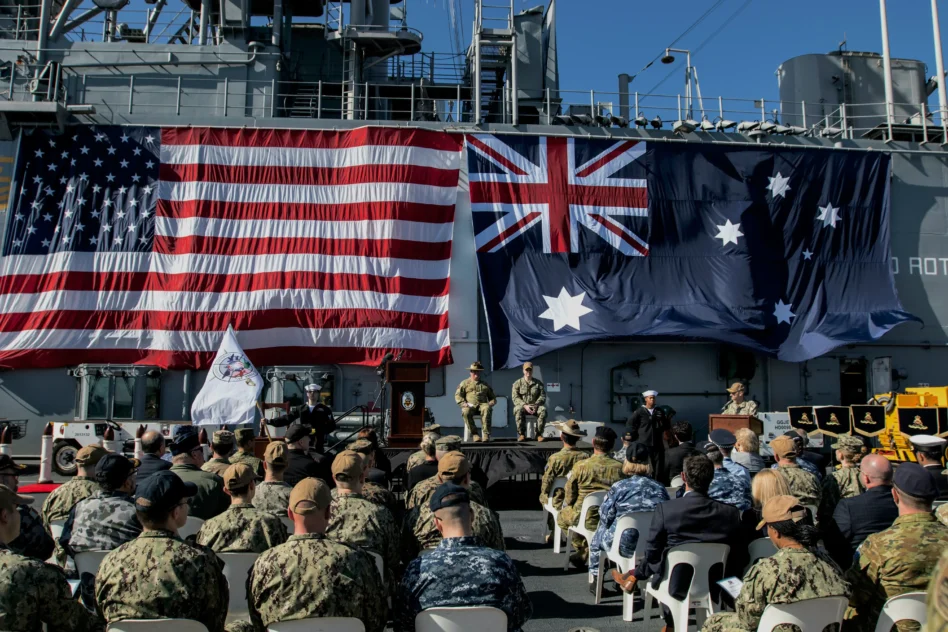Focusing on a single domain is so 2024. This morning, Virginia-based DEFCON AI announced in an exclusive release to Tectonic that their AI-powered logistics and mobility decision-making software (called ARTIV) is going from air-focused to multi-modal. We’re talking air, land, and sea, baby.
Plus, they’ll be testing this new multi-modal product at Talisman Sabre, the US and Australia’s largest biennial military exercise.
Origin story: DEFCON AI, born out of Red Cell Partners’ incubator, has had a meteoric rise since its founding in 2022, including a $44M seed round last year. Part of that explosive growth, CEO Yisroel Brumer told Tectonic, is that they “gathered what I believe to be the best leadership team in defense.”
For a company focused on optimizing military logistics, Brumer might be right. DEFCON’s founding team includes:
- Air Force Gen. Paul Selva (Ret.): former Vice Chairman of the Joint Chiefs of Staff and commander of USTRANSCOM
- USAF Brig. Gen. Scott Stapp (Ret.): ex-Northrop Grumman CTO and director of special programs for the OSD
- Grant Verstandig: Red Cell Partners’ founder and CEO
- Brumer himself: former director of the Pentagon’s CAPE office.
The tech: DEFCON’s ARTIV tool uses AI and mathematical modeling to generate instant logistics plans in contested environments, like on the battlefield or after a natural disaster. “We’re in the business of giving planners decision-support software,” Selva told Tectonic in an interview.
ARTIV was first used by Air Mobility Command, which Brumer said was “the forward-leaning command that wanted the software first.” Expanding that software into the land, rail, and sea domains was “orders of magnitude harder,” Brumer added, but “taking on the problem from a crawl, walk, run approach has been really successful.”
Talisman Sabre: We’ll get to see how successful DEFCON’s software actually is during the 2025 Talisman Sabre exercise in Australia later this month. According to the Army, here’s what’s on the menu for this year’s iteration, the eleventh and largest yet:
- 35,000 military personnel from the US, Australia, Germany, the UK, and 15 other allied countries.
- Exercises across the air, land, maritime, space, and cyber domains.
- Amphibious landings, land forces maneuver, urban operations, and special forces activities.
That’s a whole lot of logistics.
DEFCON down under: Now, ARTIV won’t be planning the whole thing—it’s more of a hybrid approach.
Selva told Tectonic that DEFCON built the multimodal product alongside the Army’s 8th Theater Sustainment Command, which is “using manual processes to plan the exercise.” At Talisman Sabre, he added, DEFCON will “run the software with real data next to the Army planners who are executing in real time,” replicating the transportation network and proposing better ways to do it on the fly. Brumer is betting that it’ll “blow everybody’s mind.”
- The new Theater Distribution multi-modal module includes core mission inputs like cargo and passenger requirements, movement timelines, and target delivery dates.
- Users can plug these variables in and customize for commander preferences (e.g., cost effectiveness, resilience, force flow, or composition).
- ARTIV then spits out “recommended actions that are visualized on an interactive map,” according to a release to Tectonic.
Digital disruption: The tool can also be used in reverse to simulate disruptions. “Once we do the simulation, whether it’s man-made or natural, we can simulate congestion, and we can very quickly show the planners what their options are, or whether they even have any options,” Selva said. To quote Mike Tyson, “Everyone has a plan until you get punched in the mouth.”
DEFCON’s pitch is that ARTIV can help planners stay on their feet and adapt logistics to twists and turns in real time.
Bug-hunting: ARTIV’s multimodal mode is still in late-stage testing. “We’re still finding small bugs,” Brumer said, “But at the big rock level, it absolutely works.” The hope is that testing it at Talisman Sabre will help prove the software’s capabilities to the Army’s planners and speed up user adoption.

